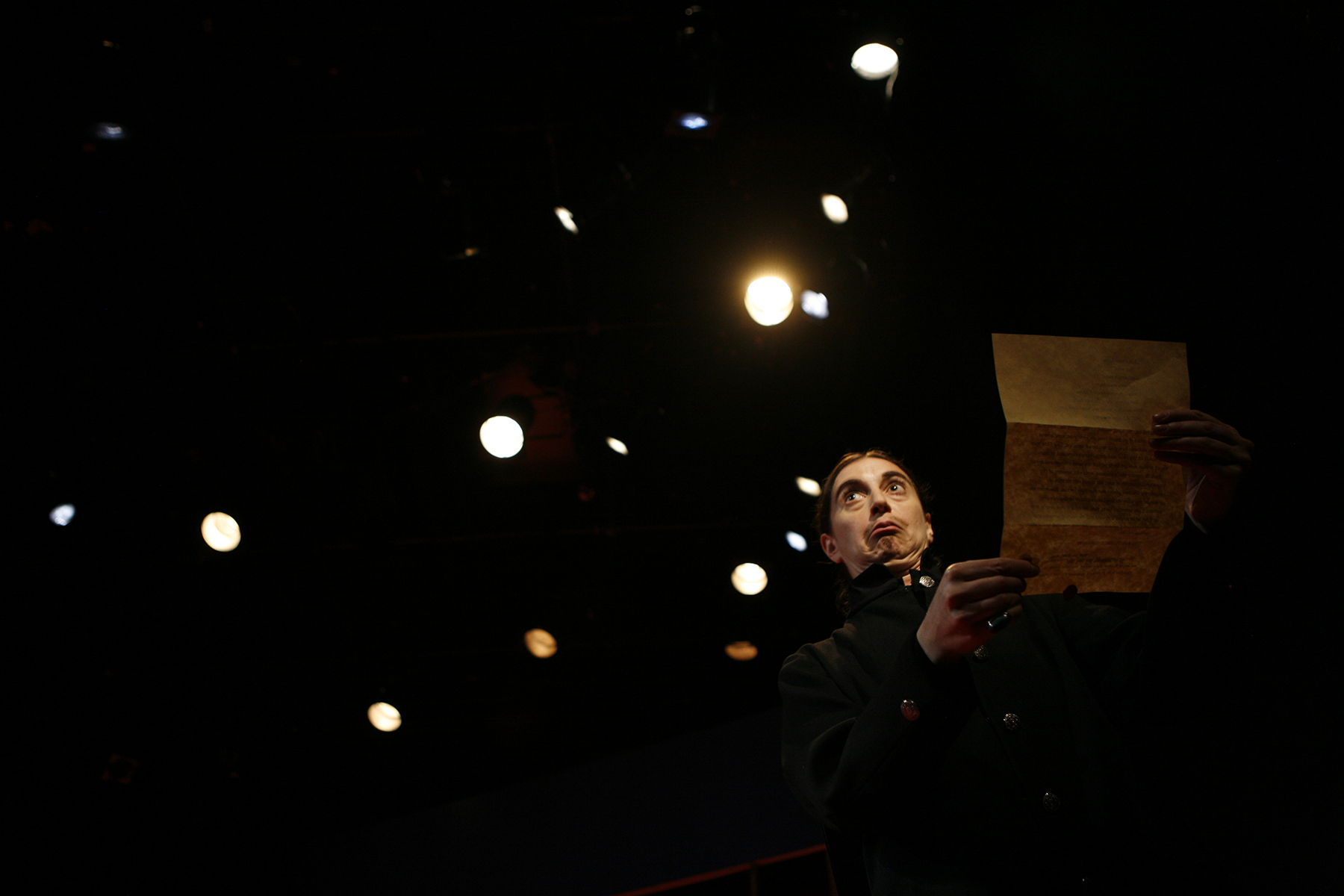In Classic Battle of the Sexes, Women Take the Upper Hand
By PHOEBE HOBAN
November 14, 2005 – The New York Times
 What could be more apt than the Queen’s Company, an all-female acting troupe, tackling Shakespeare’s Taming of the Shrew, perhaps the most famous war-of-the-sexes comedy of all time – a play that has over the years caused manifold arguments about whether it is sexist and misogynistic, or cleverly, quite the opposite. But don’t be mistaken; just because Petruchio (and every other character) is played by a woman doesn’t mean this is a feminist diatribe.
What could be more apt than the Queen’s Company, an all-female acting troupe, tackling Shakespeare’s Taming of the Shrew, perhaps the most famous war-of-the-sexes comedy of all time – a play that has over the years caused manifold arguments about whether it is sexist and misogynistic, or cleverly, quite the opposite. But don’t be mistaken; just because Petruchio (and every other character) is played by a woman doesn’t mean this is a feminist diatribe.
Instead, the use of women to play men turns the usual Shakespearean gender-bending – from the ladies dressed as lads (and vice versa) in so many of his plays, and the Elizabethan theatrical tradition of men playing women – on its head. By doing so, the Queen’s Company production provides a subtle subtext to Shakespeare’s bawdy tale of a wild woman apparently tamed by her sadistic mate, who uses reverse psychology to win her over. (Although the question of who, in the end, has the upper hand is one of the play’s most compelling elements.) In this version of Taming of the Shrew there is no question that women rule.
Indeed, the company’s director, Rebecca Patterson, has reinvented the traditional “Induction” involving Christopher Sly, replacing it with a quickie modern prologue in which the actress who plays Kate (Carey Urban) lip-syncs the Cyndi Lauper anthem “Girls Just Want to Have Fun,” as she strips off her red sweat shirt and zips on her Elizabethan bodice. (Not that this foreshadowing is really necessary.)
It is a credit to the skills of the cast that you almost immediately forget any gender issues but those central to the play itself: the eight women (many of whom play multiple roles) are entirely convincing as men – and in some cases even quite attractive men. And then there is Queen’s Company’s coup de grâce: the inflatable doll who plays Bianca (billed in the program by her trade name, “Little Sweetie Doll”).
The Queen’s Company, it seems, just wants to have fun, and fun they have, whether it’s restructuring text or adding pop musical interludes. Kate’s final speech is used twice, partially recited the first time by Petruchio in the opening scene. There is a hilarious dream sequence featuring a routine set to Tina Turner’s “I Don’t Wanna Fight.” The madcap wedding has become a multicultural affair, with Indian music and garb. (But the scene in which Petruchio subverts the wedding has been almost completely eliminated.) Virtually all of Bianca’s lines have been cut, reducing this secondary female character to not much more than a very funny sex toy – her tango with Lucentio is a high point – until she suddenly pipes up at the very end.
Samarra, as the handsome, dreadlocked Petruchio, and Natalie Lebert, who plays both Petruchio’s long-suffering servant, Grumio, and Lucentio’s servant, Tranio, are standouts. Also especially good are Amy Driesler as Lucentio/Cambio, and Karen Berthel, who plays Bianca’s suitor, Gremio, as well as several other roles. Beverley Prentice makes a fine Hortensio/Litio. Carey Urban’s Kate takes a while to bloom but totally holds her own (literally) by the play’s end – when she pins Petruchio to the floor.
The Queen’s Company’s Taming is anything but tame.
